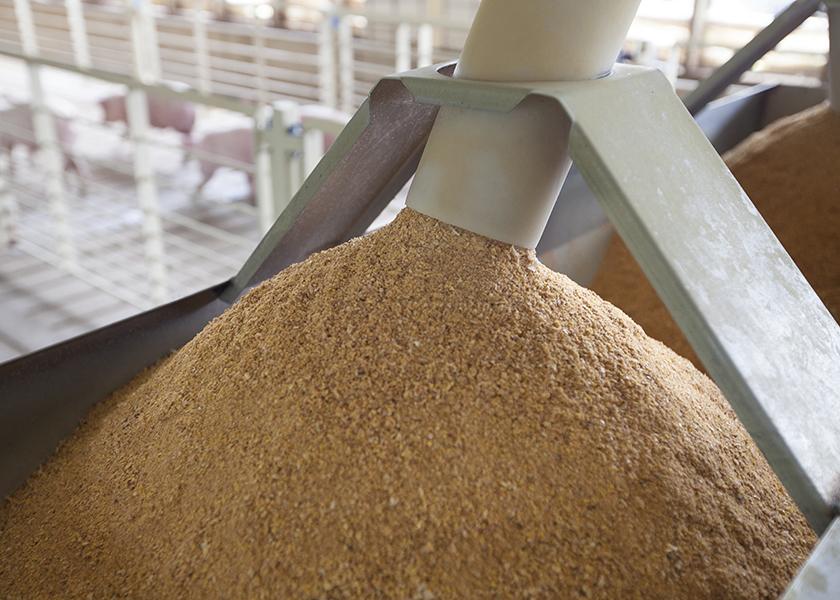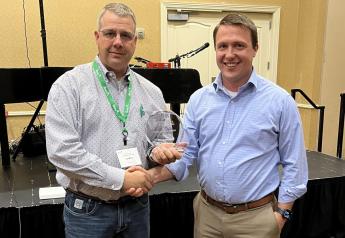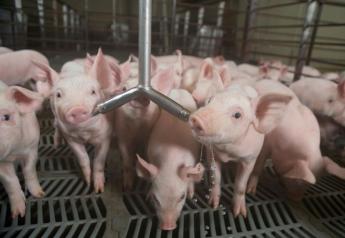Manage ASF Risk: Where Are Your Feed Ingredients Sourced?

The potential for feed ingredients to serve as a vehicle for African swine fever (ASF) virus introduction to the U.S. remains a significant concern, said Gil Patterson, VMD, chief medical officer at veterinary technology company, VetNOW.
“It is imperative that channels through which high-risk livestock feeds and feed ingredients are imported into the U.S. from ASF-positive countries are identified and considered in the USDA’s ASF National Response Framework,” Patterson says in a summary of his recent publication in Transboundary and Emerging Diseases.
With the recent announcement of ASF in the Dominican Republic on July 28 and in Haiti on Sept. 20, Patterson says it’s more important than ever to put up every guard possible to keep this virus out of the U.S.
Identify Risk
Patterson’s study demonstrates the use of a novel analytical tool he developed to categorically quantify pork products and potential high-risk feed ingredients that have entered the U.S. from ASF-positive countries over a five-year period (2016-2020).
Data for this study were obtained at the United States International Trade Commission Harmonized Tariff Schedule (HTS) website, a publicly available website that provides transaction information on specific trade commodities between the U.S. and its international trading partners.
In the study, 29 high-risk pork products or feed ingredients with the potential to be fed to pigs were analyzed. High-risk products and ingredients are those that previous research has shown to facilitate extended viral survivability, he notes. These products include soybean meal and oilcake, distillers grains, pet food, and pork sausage casings.
Data were then exported into Microsoft Excel and organized into pivot tables to describe the quantity of each product by country of origin and Port of Entry (POE). The analysis focused on the 60 ASFV-positive countries as were reported at the time of publication by the World Organization for Animal Health (OIE) in December 2020.
How Many High-Risk Products Are Imported into the U.S.?
In 2020, a total of 486,902 metric tons (MT) of these high-risk products were imported into the U.S. from a total of 19 of the 60 ASFV positive foreign countries, Patterson says.
A majority of imported animal feed ingredients came from India in 2020 (85.8%; 392,243 MT), whereas the majority of pork products and by-products were imported from Poland (21,191 MT, 70.6%).
Soybean oilcake from India entered the U.S. through a total of 15 Ports of Entry (POEs) in 2020. Of these POEs, a total of 5 POEs received greater than 91% of all of soy oilcake originating from India, including Baltimore, MD (37.7%), San Francisco, CA (30.1%), Seattle, WA (12.7%), New Orleans, LA (5.9%), and Detroit, MI (5.1%).
In response to recent events, Patterson retrospectively updated his dataset to include the Dominican Republic (DR), and determined that 634 MT of soybean meal was imported into San Juan, Puerto Rico (USA) from the DR in 2020.
The identification of specific POE’s that are receiving potentially high-risk feed ingredients is of paramount importance in this study. US Customs and Border Control (CBP) is tasked with the responsibility of protecting the US pork supply from foreign animal disease introduction, among its many other important duties. This process is carried out across the 328 POEs that CBP oversees, and without unlimited resources, rational decisions must be made on where to concentrate additional surveillance efforts. Data from this study demonstrates that the vast majority of high-risk ingredients enter the US from a small number of distinct ports of entry, and all of a sudden, the monumental task of focusing limited surveillance resources becomes both manageable and effective, Patterson says.
Specific detailed examples are provided in the study to demonstrate the tool’s utility and application, however the real power of the tool is its flexible interface, which can be quickly modified to zero-in on specific feed ingredients, countries, or POEs depending on what the user’s question may be,” he explains. “To my knowledge, the use of and application of such a tool has not been previously utilized to support ongoing risk mitigation efforts.”
In the future, he hopes to develop a more user-friendly and interactive interface providing an inclusive analysis of global livestock feed ingredient sourcing.
Read the full paper here.
Read more about Patterson’s work at:
African Swine Fever Survives in Feed, Now What?







